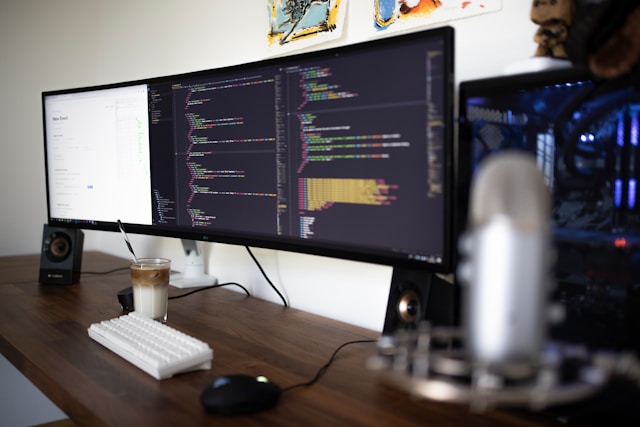Hey everyone! Evelyn here, diving into something I’ve been tinkering with for ages: cross-platform mobile app development. I’ve seen it all, from the early days of clunky interfaces to the slick, near-native experiences we can create today. Let’s get into what makes it tick, and whether it’s the right path for your next project.
What’s the Buzz About Cross-Platform Development?
In a nutshell, cross-platform development is all about building apps that run on multiple operating systems (think iOS and Android) using a single codebase. This means less time coding separate versions, which sounds pretty dreamy, right? It’s becoming increasingly popular, and for good reason. Companies are always looking for cost-effective ways to reach more customers, and cross-platform definitely fits the bill.
I remember back at Google, we were constantly juggling resources to build separate iOS and Android versions of our apps. The idea of a single codebase that could do both was, well, a bit of a holy grail. Now, with frameworks like React Native, Flutter, and Ionic, it’s a reality!
The Shiny Perks: Why Go Cross-Platform?
Okay, let’s break down the advantages, and trust me, there are quite a few:
- Cost Efficiency: This is a big one. Less code = less time = less money. Using a single codebase reduces development time and resources. I mean, who doesn’t love saving a few quid?
- Faster Development: You’re not rewriting the same features twice. This means quicker turnaround times and getting your app to market faster. Which, let’s face it, is crucial in today’s fast-paced world.
- Wider Audience Reach: One app, multiple platforms. You’re not limited to just iOS or Android users. Expand your potential customer base without doubling your workload.
- Easier Maintenance and Updates: Updating one codebase is far simpler than managing multiple versions. This streamlines the maintenance process and keeps your app consistent across platforms. I’ve been there, wrestling with different versions of the same app – trust me, this is a lifesaver!
- Unified User Experience: Cross-platform tools allow developers to create a consistent user experience across devices. I think it’s important to have a uniform user experience that app users can enjoy!
The Not-So-Shiny Bits: Challenges to Consider
Now, before you jump in headfirst, let’s talk about the challenges. Because, let’s be honest, nothing’s ever *completely* perfect.
- Performance Limitations: Sometimes, cross-platform apps can lag a little behind native apps in terms of performance. Frameworks like Flutter and React Native enable cross-platform capabilities but may slightly compromise performance compared to native apps. It’s getting better, but it’s still something to keep in mind.
- Debugging Can Be Tricky: Finding and fixing bugs can be more complex due to inconsistencies between platforms. Debugging cross-platform apps introduces a unique set of challenges. The primary issue arises from inconsistencies between platforms.
- Tool Limitations: While cross-platform frameworks have improved significantly, they might still have limitations compared to native development tools in terms of flexibility and control.
- Platform-Specific Features: Accessing certain native features or APIs can sometimes be a bit more complicated.
I’ve also noticed that cross-platform apps often lack animations, videos, and other high-quality elements in their user interfaces.
Framework Face-Off: React Native vs. Flutter vs. Ionic
Choosing the right framework is key. Each has its strengths and weaknesses:
- React Native: Developed by Facebook, it offers fast development using JavaScript and React. Great for code reuse.
- Flutter: Google’s framework, known for its visually appealing interfaces and Dart language.
- .NET MAUI: .NET Multi-platform App UI (.NET MAUI) is a cross-platform framework that was released in May 2022 and is owned by Microsoft.
According to the 2023 Stack Overflow Developer Survey, Flutter is the most popular with 9.12 of engineers using it, with React Native in a close second with 8.43. But don’t let popularity be the only factor.
So, Is Cross-Platform Right for You?
Ultimately, it depends on your project’s needs. If you’re after cost savings, faster development, and a broad audience reach, then cross-platform is definitely worth considering. But, if performance is absolutely critical, or you need deep access to native features, then a native approach might be better. Also developers might need to learn new frameworks and tools to build cross-platform apps, which can increase the initial development time.
I remember a client a while back who was adamant about going native for their gaming app. They needed every ounce of performance they could get. But for a simpler business app, cross-platform was the perfect fit. It’s all about understanding your priorities, really.
I think this method should work… At least in most cases. Although, of course, we still need to check.
Final Thoughts
Cross-platform mobile app development is a powerful tool in the right hands. I hope this article has shed some light on its benefits and challenges. As always, do your research, weigh your options, and choose the path that best aligns with your goals.
Until next time, happy coding!
